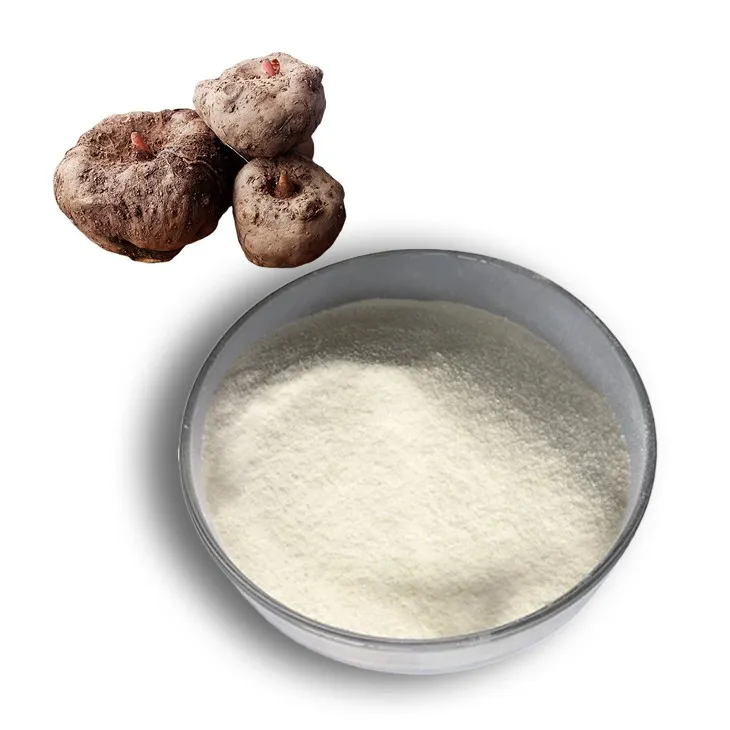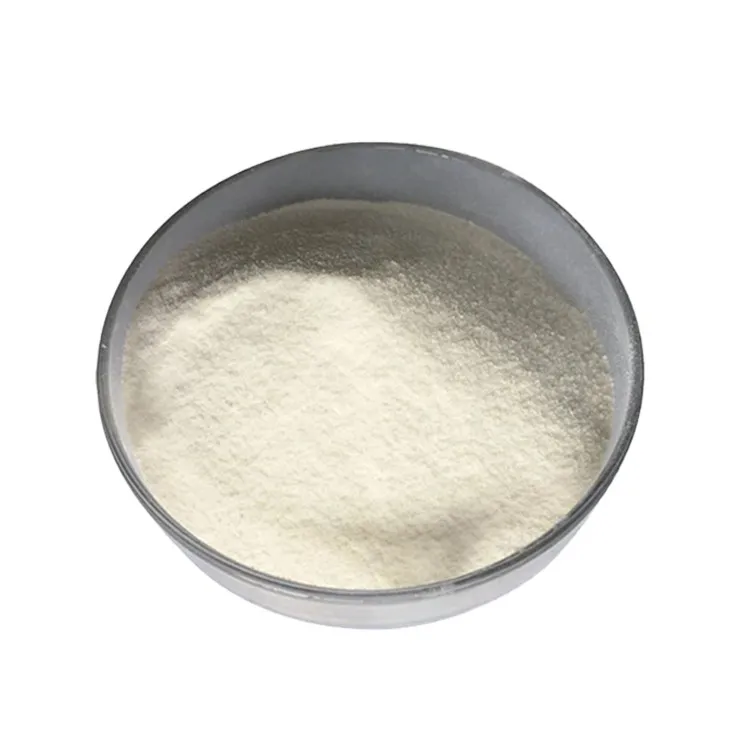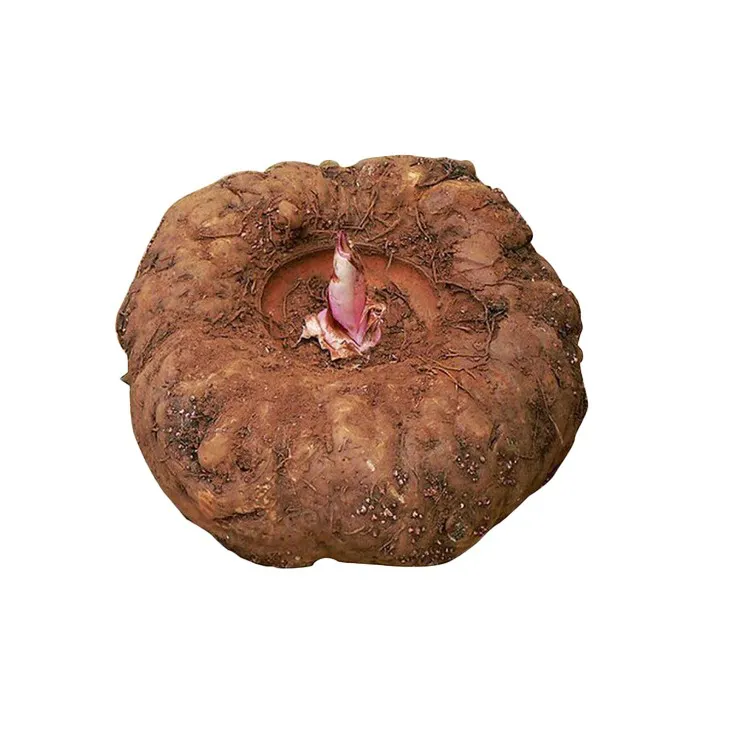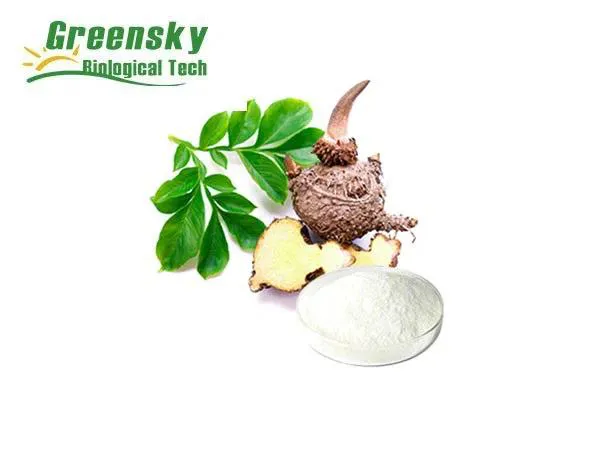- 0086-571-85302990
- sales@greenskybio.com
The flavor of ripe konjac and natural konjac powder.
2024-11-13

1. Introduction
Konjac, a plant - based ingredient, has been making waves in the food and health industries. The flavor of mature konjac and the versatility of natural Konjac Powder are two aspects that deserve in - depth exploration. This article aims to provide a comprehensive understanding of these elements, their properties, and their significance in various cuisines and for health.

2. The Nature of Ripe Konjac
2.1. Physical Characteristics
Ripe konjac has a distinct appearance. It is often a bulb - like structure with a firm yet somewhat elastic texture. The outer skin may be a bit rough, but the inner flesh is what holds the key to its flavor. It is usually a pale color, which can range from off - white to a light beige.
2.2. Flavor Profile
The flavor of ripe konjac is quite unique. It has a very mild, earthy taste that is somewhat reminiscent of certain root vegetables. There is a subtle nuttiness to it as well. However, on its own, it is not an overpowering flavor, which makes it a great base for various culinary creations. It can absorb the flavors of other ingredients it is cooked with, making it a very adaptable component in the kitchen.

3. Natural Konjac Powder: A Multifaceted Ingredient
3.1. Production and Composition
Natural Konjac Powder is derived from the konjac plant. It is made through a process that involves drying and grinding the konjac tuber. The powder is rich in glucomannan, a type of dietary fiber. This fiber content gives konjac powder many of its unique properties, such as its ability to form gels when combined with water.
3.2. Culinary Uses
- Thickening Agent: In cooking, natural konjac powder is an excellent thickening agent. It can be used in soups, stews, and sauces to give them a thicker consistency without adding a lot of calories. For example, in a vegetable soup, a small amount of konjac powder can make the broth more viscous, similar to the effect of adding flour or cornstarch, but with a healthier profile.
- Gluten - Free Substitute: For those with gluten sensitivities or following a gluten - free diet, konjac powder can be used as a substitute for gluten - containing flours in baking. It can help to bind ingredients together and give a certain texture to baked goods, such as bread or muffins.
- Jelly - Like Creations: Konjac powder can be used to make jelly - like desserts or snacks. By mixing it with water and adding flavors like fruit juice or herbal extracts, one can create a low - calorie, refreshing treat. For instance, a konjac - based mango jelly can be a delicious and healthy alternative to traditional high - sugar jellies.

4. Ripe Konjac in Different Cuisines
4.1. Asian Cuisines
- In Japanese cuisine, ripe konjac is often used in oden, a one - pot dish. It is simmered in a dashi - based broth along with other ingredients like fish cakes, daikon radish, and boiled eggs. The konjac absorbs the flavors of the broth, adding a unique texture and a mild earthy flavor to the dish.
- Chinese cuisine also utilizes ripe konjac. It can be stir - fried with vegetables and meat. For example, in a stir - fry with mushrooms and pork, the konjac provides a chewy texture that contrasts well with the tender mushrooms and the juicy pork.
4.2. Western Cuisines
While not as commonly used in Western cuisines as in Asian ones, ripe konjac is starting to gain some popularity. It can be used in vegetarian or vegan dishes as a meat substitute. For example, it can be marinated and grilled to mimic the texture of meat in a burger or a kebab. Its ability to take on different flavors through marination makes it a versatile option for creating plant - based versions of classic Western dishes.

5. The Health Benefits of Konjac
5.1. Digestive Health
Both ripe konjac and konjac powder are beneficial for digestive health. The high fiber content, especially the glucomannan in konjac powder, helps to regulate bowel movements. It can prevent constipation by adding bulk to the stool. Additionally, it may also promote the growth of beneficial gut bacteria, which is important for overall gut health.
5.2. Weight Management
Konjac is low in calories and high in fiber, which makes it a great addition to a weight - management diet. The fiber in konjac can help to create a feeling of fullness, reducing appetite and overall calorie intake. For example, a person who consumes a konjac - based snack may feel satisfied for a longer period compared to consuming a high - calorie, low - fiber snack.
5.3. Blood Sugar Control
Some studies suggest that konjac may have a positive effect on blood sugar control. The fiber in konjac can slow down the absorption of carbohydrates, preventing rapid spikes in blood sugar levels. This can be particularly beneficial for people with diabetes or those at risk of developing diabetes.

6. Comparing the Flavor and Use in Cooking
6.1. Flavor Interaction
When it comes to flavor interaction, ripe konjac has a more immediate impact in cooked dishes due to its physical form. It can directly contribute its mild, earthy flavor. On the other hand, konjac powder, when used as a thickening agent or in other applications, may not have a significant flavor impact on its own. However, it can enhance the overall texture and mouthfeel of the dish, which in turn can influence how the flavors are perceived.
6.2. Texture Contribution
- Ripe konjac offers a chewy and somewhat elastic texture in cooked dishes. This texture can add an interesting dimension to the dish, especially in stir - fries or stews. For example, in a beef stew, the konjac pieces can provide a different type of chewiness compared to the beef itself.
- Konjac powder, when used to form gels, creates a smooth and jelly - like texture. This can be used to create unique textures in desserts or in some savory dishes where a soft, gelled component is desired, such as in a chilled vegetable aspic.
7. Conclusion
In conclusion, the flavor of ripe konjac and the functionality of natural konjac powder are both valuable aspects of this remarkable plant - based ingredient. Whether it is the unique, mild flavor of ripe konjac enhancing traditional and modern cuisines or the versatility of konjac powder in cooking and for health benefits, konjac has a lot to offer. As more people become interested in plant - based ingredients and healthy eating, konjac is likely to continue to gain popularity and find new applications in the world of food and health.
FAQ:
What are the main properties of ripe konjac?
Ripe konjac has a unique texture that is often gelatinous and somewhat chewy. It typically has a mild, earthy flavor. Konjac contains glucomannan, a type of dietary fiber that can absorb a large amount of water, which contributes to its thickening and gelling properties in various food preparations.
How is natural konjac powder made?
Natural konjac powder is made from the konjac plant. First, the konjac tubers are harvested. Then, they are processed to remove impurities. After that, they are dried and ground into a fine powder. This powder retains many of the beneficial properties of the konjac plant, such as its high fiber content.
What are the uses of ripe konjac in cuisines?
Ripe konjac can be used in a variety of ways in cuisines. In Japanese cuisine, it is often used to make konjac jelly, which is a popular dessert or side dish. In Chinese cuisine, it can be added to hot pots or stir - fries. It can also be pickled and used in salads in some regions. Its unique texture adds an interesting element to dishes.
How can natural konjac powder be incorporated into cooking?
Natural konjac powder can be used as a thickening agent in soups, stews, and sauces. It can also be used to make gluten - free baked goods, as it can help bind the ingredients together. Additionally, it can be combined with water to create a gel - like substance, which can be used to make mock - meat products or added to smoothies for an extra fiber boost.
What are the health benefits of consuming ripe konjac and natural konjac powder?
Both ripe konjac and natural konjac powder offer several health benefits. Due to their high glucomannan content, they can aid in digestion by promoting bowel regularity. They may also help with weight management as they can create a feeling of fullness with relatively few calories. Additionally, some studies suggest that konjac may have a positive effect on blood sugar levels and cholesterol levels.
Related literature
- The Nutritional and Functional Properties of Konjac: A Review"
- "Konjac in Food: Processing, Properties, and Applications"
- "Health - Promoting Effects of Konjac Glucomannan"
- ▶ Hesperidin
- ▶ Citrus Bioflavonoids
- ▶ Plant Extract
- ▶ lycopene
- ▶ Diosmin
- ▶ Grape seed extract
- ▶ Sea buckthorn Juice Powder
- ▶ Fruit Juice Powder
- ▶ Hops Extract
- ▶ Artichoke Extract
- ▶ Mushroom extract
- ▶ Astaxanthin
- ▶ Green Tea Extract
- ▶ Curcumin
- ▶ Horse Chestnut Extract
- ▶ Other Product
- ▶ Boswellia Serrata Extract
- ▶ Resveratrol
- ▶ Marigold Extract
- ▶ Grape Leaf Extract
- ▶ New Product
- ▶ Aminolevulinic acid
- ▶ Cranberry Extract
- ▶ Red Yeast Rice
- ▶ Red Wine Extract
-
Coix Seed Extract
2024-11-13
-
Polygonum Cuspidatum Extract
2024-11-13
-
Dan Shen Root Extract/Salvia Root Extract
2024-11-13
-
Maca Extract
2024-11-13
-
Acerola Extract
2024-11-13
-
Soy Extract
2024-11-13
-
Black Pepper Extract
2024-11-13
-
Artichoke Extract
2024-11-13
-
Almond Extract Powder
2024-11-13
-
Beetroot Powder
2024-11-13





















